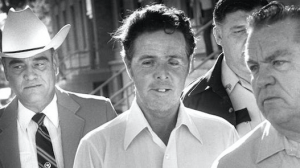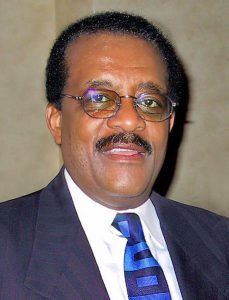Imagine coming home from a long day of work from your main job, only to instantly begin work again on developing an invention that could change the outcome of World War II. Countless hours spent in a room in your home designated specifically for inventing, motivated by the idea of helping the people you left behind in your hometown. You strive in your free time to create something that would not only show your loyalty to the United States but would also help defeat the Nazis. Nothing could stop you, except maybe your reputation and gender. And this was the case for the famous actress Hedy Lamarr, the woman who dedicated her efforts to inventing the concept of spread spectrum. No one thought she would be capable of helping to create a technology that is still used in wireless communications to this day. But Lamarr set out to help those with her same beliefs who were suffering because of this war.1

Hedy Lamarr was undoubtedly beautiful, and was even credited with being the most beautiful woman in the world, but when she wasn’t in front of the flashing lights of fame, she was an amateur scientist.2 Hedy Lamarr was so much more than her beauty. She was intelligent and creative. After years of success in her acting career, she became actively involved in the world of science and technology. Lamarr had a racy past, which included her becoming known as a sex symbol in the film industry, and countless scandals that caused her other amazing talents and inventions to be hidden in the shadow of her limelight. Her growing wealth and Austrian past gave her the motive to contribute help to those who were suffering in Europe. As any successful actress, Hedy Lamarr attended many parties, but little did she know that one of these parties would be crucial in commencing the invention that has changed the world.3
The Japanese attack on Pearl Harbor in December 1941 got Lamarr involved with selling war bonds and volunteering in United Service Organization clubs to help the country as much as possible. Hedy was great at selling war bonds, even selling up to $7 million in one night; but Lamarr knew she could do more.4 This resulted in her beginning to ponder the ideas of her greatest invention. Then, one night as Lamarr attended another one of her Hollywood parties, she met George Antheil, a music composer for Hollywood films. Together, the two would turn Lamarr’s ideas into reality.5 After spending the whole night discussing their admiration for inventing and interest in assisting in the war, the two built the foundations of an invention that would possibly assist the Navy in attacking enemy ships. Lamarr even considered leaving Hollywood to dedicate her full energy to inventing, by joining the National Inventor’s Council, but was dissuaded by Antheil. She then decided to stay in Hollywood, where she could boost public morale through her films and work on her inventions in her free time. Despite Lamarr’s busy schedule, she was able to work with Antheil to begin developing her idea. Antheil’s previous knowledge in having once composed a piece that required sixteen synchronized player pianos assisted in executing Lamarr’s idea.
Lamarr was largely motivated by her Jewish roots. She wanted to bring her mother to the United States, which was nearly impossible at the time. The trip to cross the Atlantic was extremely dangerous, as Nazi submarines were blowing up any ships that carried refugees trying to flee Europe, which only fueled Lamarr’s desire to assist in ending the war. With her extensive knowledge of weapons used in this war, due to her previous relationship with Fritz Mandl, a munitions manufacturer who created weapons and worked closely with Nazis, Lamarr was able to find a problem that needed a solution. The cause that Lamarr sought to fix was the waste warships went through as they shot torpedoes in a general direction before actually hitting the enemy.6

Lamarr’s plan was to invent a radio-controlled missile that contained an anti-jamming device. The idea of a radio-controlled missile was genius for the time, as it would be able to adjust to a moving target. The only issue with this was that the radio frequency controlling the missile could be easily obstructed by the enemy.7 The process that would fix the issue with a regular radio-controlled missile would soon be known as “Frequency Hopping.” This idea of frequency hopping allows a message to be broadcast over a series of radio frequencies and a receiver hopping from frequency to frequency simultaneously is used to pick up the message. Any eavesdroppers would not be able to hear the full message and those attempting to stop the message (also known as jammers) would only be able to knock out a few pieces, allowing the full message to still get through.
Lamarr and Antheil’s invention was genius. If applied correctly, this invention could have cut the time spent at war and possibly saved millions.8 After a collaborative effort, the two sent their description of the system to the National Inventors Council in order to receive a patent. The patent’s design actually used paper rolls similar to piano rolls to synchronize the jumps between the transmitter and the receiver. There are also 88 proposed frequencies matching the number of keys to a piano. There is little doubt that the invention’s design was heavily influenced by Antheil’s involvement in music.9
The patent was granted about one year later and was sent off to Washington to possibly be considered for use in war. However, Lamarr was told that the device was unworkable and that her efforts should remain focused more on entertaining the troops and selling war bonds.10 The efficiency of their invention was overshadowed by the roles the two played in the public. The Navy didn’t believe an actress and a concert pianist could create something of any use to the war. They also considered the mechanism to be too bulky to attach to a torpedo, due to their ignorance when reading the patent and seeing the words “player piano,” which led them to believe that the two wanted to attach a player piano to a missile! This ignorance resulted in the patent collecting dust for twenty years, until three years after its expiration.11

The design was then used for a basic secure military communication. Sadly, this was not until the patent between the two had expired, resulting in neither Lamarr nor Antheil receiving a cent or any credit for their hard work. Between the years of 1945 to 2012, the patent was cited at least sixty-two times, proving it to be far from unworkable, both commercially and militarily. It was not until 1997 that Lamarr and Antheil would receive their official recognition from Electronic Frontier Foundation.12
Hedy Lamarr and George Antheil’s invention was ahead of its time. But it leaves us with the question as to what may have been different if the two had not been dismissed on account of their careers? Maybe if Lamarr had recognized her own worth as well as the worth of her invention, she would have fought for its use in the military rather than passively sitting back and allowing it to collect dust. From the face that inspired Walt Disney’s first princess, Snow White, to the brains behind the scientific concept of spread spectrum, Hedy Lamarr is a remarkable woman. And due to the efforts of Lamarr and Antheil, the concept of “frequency hopping” can now be found at the tips of your fingers, as it serves as the foundational technology in Wi-Fi, Bluetooth, and GPS.13
- Women in World History: A Biographical Encyclopedia, 2002, s.v. “Lamarr, Hedy (1913-2000),” by John Haag. ↵
- Cathaleen Chen, “Hedy Lamarr: Actress by day, tech inventor by night; Heddy Lamarr was honored with a Google Doodle. It turns out, the famous actress was also quite the inventor,” The Christian Science Monitor, November 9, 2015. ↵
- Women in World History: A Biographical Encyclopedia, 2002, s.v. “Lamarr, Hedy (1913-2000),” by John Haag. ↵
- Women in World History: A Biographical Encyclopedia, 2002, s.v. “Lamarr, Hedy (1913-2000),” by John Haag. ↵
- Women in World History: A Biographical Encyclopedia, 2002, s.v. “Lamarr, Hedy (1913-2000),” by John Haag. ↵
- Anna Diamond, “Hollywood’s Secret Weapon: A new documentary, Bombshell: The Hedy Lamarr Story, unearths the movie star’s World War II invention, an ingenious forerunner of high-tech communications. Director Alexandra Dean loops us in,” Smithsonian 26 (2017). ↵
- Sandra Hall, “Inside Hedy Lamarr’s secret life as a wartime inventor,” The Age (Melbourne, Australia), March 1, 2018. ↵
- Interestingly, the technology of “frequency hopping” would only catch on twenty to thirty years after the invention’s creation in 1941. ↵
- Gale Virtual Reference Library, 2007, s.v. “Lamarr Hedy”,227. ↵
- Pamela Hutchinson, “Hedy Lamarr: Stealing Beauty,” Sight & Sound 28, no.4 (2018): 42. ↵
- Fleming Meeks, “I guess they just take and forget about a person,” Forbes 145, no. 10 (1990): 137. ↵
- Pamela Hutchinson, “Hedy Lamarr: Stealing Beauty,” Sight & Sound 28, no.4 (2018): 42. ↵
- Richard Rhodes, “HEDY’S FOLLY: The Life and Breakthrough Inventions of Hedy Lamarr, the Most Beautiful Woman in the World,” Kirkus Reviews 79, no. 19 (2011): 1796-1797. ↵



67 comments
Maya Mani
Thank you for conveying Lamarr’s story so beautifully. She had so much diligence and dedication towards her invention. I think what’s most impressive is that she refused to listen to those who underestimated her. In fact, she probably used that to fuel her passion for the invention. I think it’s also remarkable how she had the time to do this, truly inspiring, she is beautiful inside and out!
Nadia Carrasco
Overall very well written article, you can tell the author really had fun with it! Knowing very little about Hedy Lamarr I got to learn a lot through this article. She portrays herself as a smart, giving and inspired women. Her well known beauty seems to help but also discourage her along the way. I cannot imagine what it would be like living during the era where women were just looked at as objects. But she took that and made it into something she was proud to represent.
Samantha Luckey
Congratulations on being nominated for your article Before reading this article, I knew very little over this subject, so this article was very informative. Overall the writing was well done, and this author was able to engage the reader to continue reading on, as well as, informing the reader of important details over fascinating life of the Hedy Lamarr. Great work!
Max Lerma
Congratulations on your nomination! It is very easy to see why this was nominated for an award in the upcoming ceremony. Your writing style keeps your readers locked in to your story and keeps them wanting to discover more about Ms. Lamarr’s invention would do. I had known that she was a famous actress, but I had never known that she was also a brilliant inventor that was working on creating a tool that would aid military actions in a massive war. I hope that more people read this article and become aware of her contributions to more than just acting.
Robert Rees
Hedy Lamarr is prime example of the incredible women who stepped to run this country while the men left to fight in the war. And much like those women who joined the work force, she did not receive the credit and respect she deserved until later. Hedy Lamarr’s concept of frequency hopping is the backbone of the modern era considering how it is used in everything from Wi-Fi to GPS. Lamarr, much like the other woman who stepped up to support the home front when they were needed, are incredible women that were ahead of their times.
Robert Ruiz
This seemed like a well researched article, and explained the story of Hedy Lamarr very well. She was indeed a very beautiful women, which made her life easier and hard at the same time. She had obvious innovation talents and was very interesting in helping defend the Untied States during WWI. You seemed to know a lot about her and it reflect in how organized and controlled your essay was. Overall this was a great article and worthy of a nomination.
Irene Astran
Your introduction was very well done. You hit all the point you needed to truly foreshadow what you would cover later in your article. I think this is an incredible story, one that was needed in a time where women were not seen in research fields as extensively as they are now. She had so many strong attributes to her. She was smart, beautiful, and generous. What an icon!
Brianna Ford
congratulations on your nominations, it is very much deserved. Hedy Lamarr was a great actress who was also a very intellectual individual, who often got past for her beauty and not her brains. Although there were pros and cons, Lamarr’s inventions would often go unnoticed. This article did a great job at bringing her accomplishments to light and was able to honor her in away where she would not have been honor back in her time. Great read!
Lorenzo Rivera
First of all good luck and congratulations on being nominated for an award this semester. This article was both very informative and extremely well written. You did an outstanding job of grabbing the readers attention and presenting your topic. Hedy Lamarr was a woman who wanted to be known for something other than her beauty. She was a true genius, and her contributions to the betterment of society were truly inspirational. It was a really great read, and very enjoyable overall.
Rebecca Campos
This article highlights one of the unfortunate instances where an idea was put down because of the careers that these two individuals possessed. While I’d like to think it had to do with nothing career related, I feel like that is highly unlikely. These people came up with an incredible invention that could greatly benefit the military, they were overlooked because they were not deemed to be “intelligent enough”. The author wrote a very informational piece that gave the individuals the recognition they deserved for their historic work.